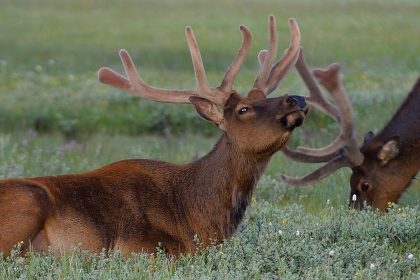
Chronic Wasting Disease Found in Norwegian Free-Ranging Ttundra Reindeer
A new article in Veterinary Research reports on the first case of chronic wasting disease in Europe. Chronic wasting disease (CWD) is a prion disease affecting reindeers and other cervids, and up until now has only been seen in North America. Dr Christina Sigurdson, a specialist in the field, talks here prion diseases and the implications of this finding.
September 19, 2016 | Source: BioMed Central | by Dr Christina Sigurdson
Prion diseases are infectious neurodegenerative disorders of humans and animals caused by the misfolding and aggregation of a normal, cellular prion protein. In an infected individual, the aggregated prion protein builds up into plaques in the brain and spinal cord, causing neuronal loss and eventually leading to death.
Chronic wasting disease prions in North American cervids
Prion diseases in animals include scrapie in sheep and goats, bovine spongiform encephalopathy (BSE) or “mad cow disease” in cattle, and chronic wasting disease (CWD) in cervids, which affects primarily deer, elk, and moose. CWD was first discovered in Colorado deer in 1967, and was believed for decades to be restricted to deer and elk in Colorado and Wyoming.
Intensive surveillance efforts over the past 16 years have instead revealed CWD in cervids well beyond these two states, as CWD-infected cervids have been detected in more than 20 additional US states stretching from Utah to the eastern seaboard as well as in two Canadian provinces, with prevalences of up to 35% in free-ranging populations and 90% in captive deer – inarguably the most infectious natural prion disease known to date. CWD prions are shed in saliva, urine, and feces; even exposure of naïve deer to an infected animal’s bedding and water bins can transmit CWD prions.
CWD in a reindeer in Norway
In a recent article in Veterinary Research, Benestad and colleagues report the opportunistic discovery of chronic wasting disease in a free-ranging tundra reindeer in Norway, which is a surprising and alarming finding as it now indicates that CWD exists in wild animals in Europe.
The brain of the affected reindeer showed classic histopathologic features of CWD in North American cervids, consisting of intense vacuolation and prion aggregates, particularly in the brainstem. The diagnosis was confirmed by ELISA and immunoblotting for prions, the latter showing prion protein bands characteristic of CWD in elk. A highly significant finding was the presence of prions in lymphoid tissue, which is typical of CWD in cervids and indicative of an extraneural phase of prion replication. The transmission studies ongoing in a panel of transgenic mice will aid in determining whether the Norwegian strain of CWD differs from that of North American cervids.
